Erlangen is a medium-sized town in the Middle Franconia region of Bavaria situated to the north of Nuremberg.
It is probably best-known for its university, which is the second-largest in Bavaria, and for being the headquarters to a number of divisions of the German conglomerate Siemens.
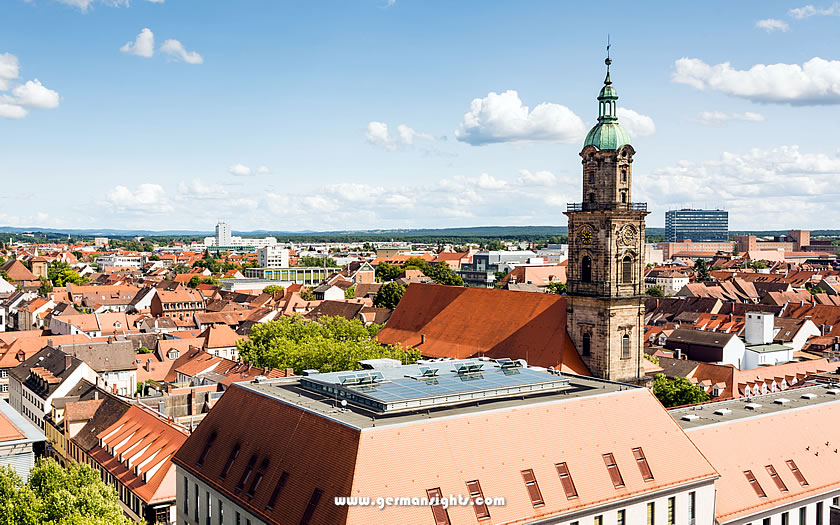
View over Erlangen
The town is also famous for its annual beer festival, the 'Bergkirchweih', which starts on the Thursday before Pentecost in late spring or early summer and attracts more than a million visitors.
The airport at Nuremberg is little more than a bus ride away from Erlangen, so if a suitable flight and provider can be found from the limited choice available it makes the best sense to use the more local option.
Distance to Nuremberg Airport: 14km
Distance to Munich Airport: 180km
Distance to Erfurt-Weimar Airport: 211km
Distance to Frankfurt Airport: 217km
Otherwise the massive choice of flights available and the good transport connections make Munich the best choice, with Frankfurt an excellent alternative option.
The train station in Erlangen is a short walk to the west of the town centre and the market square. There are regular local rail and S-Bahn services south to Nuremberg and Erlangen is on the main line north to Bamberg.
Much of Erlangen's hotel accommodation is within a short walk of the historic town centre and the train station, although there are some out towards the nearby A73 motorway for those who are looking for a convenient base with a car.
If you know when you are planning to go but haven't decided on accommodation, then use the map below to get an idea of which properties are available and to compare prices during the period you wish to travel.
Enter your proposed dates and use the '+' to zoom in on a location and reveal more properties. Click on the price above a property to see more information.
(Please note that this selection will also include some guesthouses, pensions and self-catering apartments for those who are interested in that form of accommodation!)
Alternatively, if you would like a list of properties available on your proposed dates of travel, use the search box below to find accommodation:
Erlangen was designed in the baroque style and is very much a 'planned community' of the 18th century.
However settlements in the Regnitz valley have been found from various Stone Age periods.
The first mention of Erlangen as a community is in the 11th century but the town only received its charter in 1398 and remained a relatively unimportant backwater during the Middle Ages.
The settlement was virtually burned to the ground in fighting during the Thirty Years' War and this catastrophe became the impulse for the redevelopment of Erlangen. The town population boomed with a massive influx of French Protestant refugees and this led to an economic upswing for Erlangen due to the increased demand from the larger population and the establishment of new trades and sources of income.
Erlangen was also situated on an important trade route north from Nuremberg and the ruler, Margrave Christian Ernst of Brandenberg-Bayreuth, decided to build a new larger planned town on baroque principles.
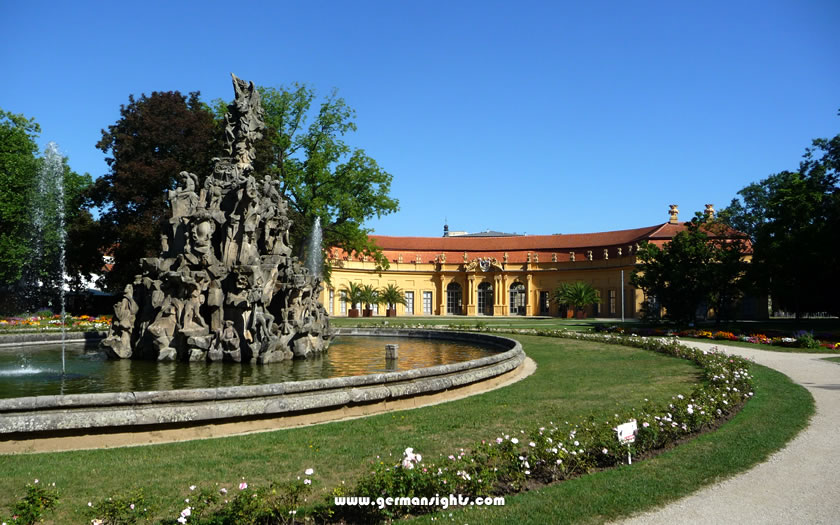
The Orangerie in the gardens of the Palace at Erlangen
The town was laid out with straight lines and right angles, with the roads leading to the market place in front of the Margrave's Palace. It was originally known as "Neu-Erlang" or "Christian-Erlang".
With this new construction and the influx of residents, the growing importance of Erlangen was sealed with the move of a university from Bayreuth to the town in the 18th century. Friedrich Alexander University is now home to 20,000 students in Erlangen (with another 19,000 in departments in Nuremberg).
Erlangen, with its history of religious tolerance, planned architecture and emphasis on educatio, is a prime example of some of the features of the 'Age of Enlightened Despots' in Europe.
Erlangen was merged with Prussia and then, during Napoleonic times, sold by the French to Bavaria. The town had doubled in size during the time of the influx of Protestants and the population doubled once more after the Second World War, when the medical technology giant Siemens decided to move to Erlangen from Berlin. The conglomerate, which has expanded on land to the south of the town, now employs around 20,000 workers in Erlangen.
The 1500 French Protestant refugees - called 'Huguenots' - who arrived in Erlangen in the 17th century were escaping decades of increasing oppression by the Catholic powers in France.
This started with a series of massacres across the country, the best-known of which is probably the St Bartholomew's Day Massacre in Paris, at the end of the 16th century and culminated in a decree which removed the right to practice their religion and forced them to convert to Catholicism.
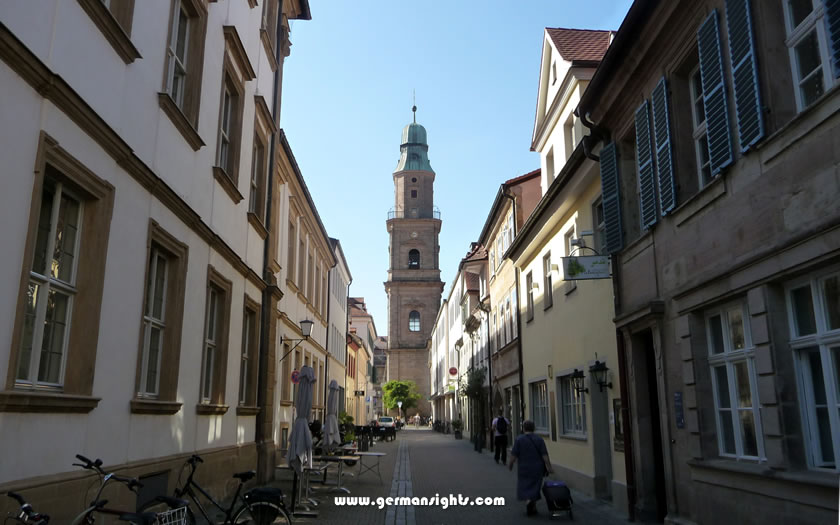
The Huguenottenkirche in Erlangen
The Huguenot refugees were welcomed in certain parts of Europe and they brought new skills with them as well as their own religion. Erlangen became, for example, a centre for glove- and hat-making.
The Hugenottenkirche was built by Margrave Christian Ernst to allow the refugees to carry out their own religion shortly after the first wave arrived. The imposing church tower was built 40 years later by the community itself.
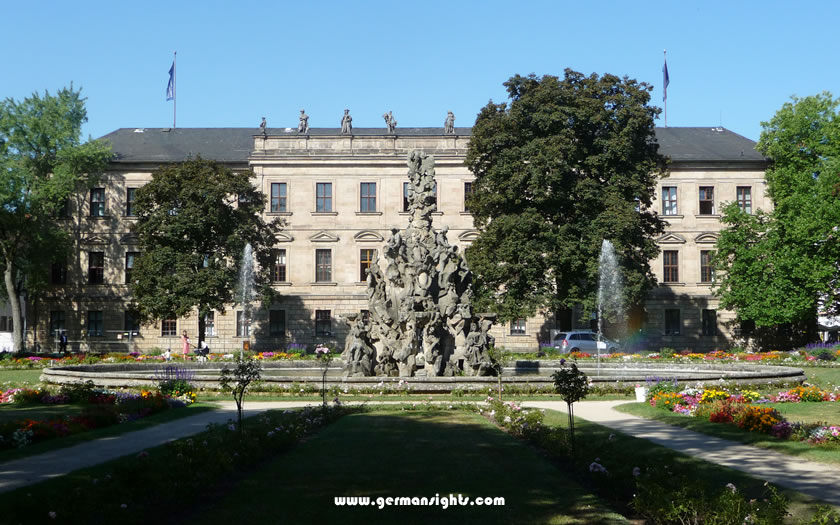
The rear of the Marktgrafenschloss in Erlangen
The fountain at the rear of the Margrave's Palace was a gift from the Huguenots to honour the Margrave. The ruler stands at the top of the fountain while the figures below represent Huguenot residents and families.
The arrival of such a large amount of French-speaking immigrants with different habits and customs was a major upheaval for Erlangen. But over the decades, the refugees were joined by other German-speaking immigrants fleeing persecution themselves and the strong French-speaking minority was eventually assimilated into the community.
The last French-language service was held in the Hugenottenkirche in the early 19th century.
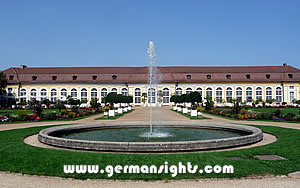
Ansbach is known for its old town, with historic buildings such as the Ansbach Residence, home to the former rulers of Ansbach. It is the administrative headquarters of the Middle Franconia region. Visitors can explore the history of the town at the Margravial Museum and explore the magnificent rococo court gardens.
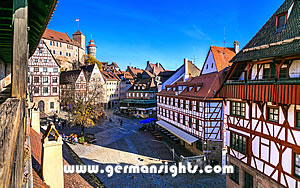
Nuremberg is famous for its medieval architecture, cobblestone streets, and traditional Franconian cuisine. Visitors can explore centuries-old landmarks, such as the Kaiserburg Castle, Albrecht Dürer's House, and the Nuremberg Trials Memorial. Despite its connection with the darkest era of German history, Nuremberg has become a thriving city, offering a bustling nightlife, museums, theatres, and festivals throughout the year.
The Erlangen tourist office is located near the railway station in the centre of town. It is open from Monday to Friday and from 10.00-14.00 on Saturdays.